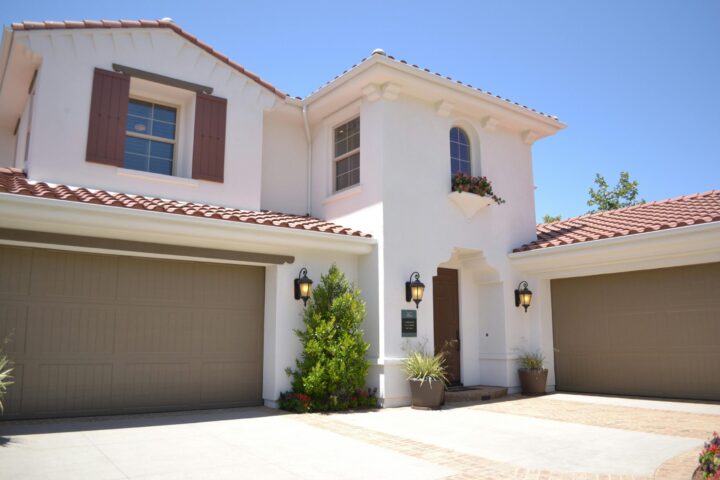The following contribution is from another author.
Your garage door isn’t just an entry point—it’s a vital part of your home’s functionality and curb appeal. Whether you’re upgrading, replacing, or installing a new one, choosing the right garage door involves more than simply picking a design you like. It’s about finding the perfect combination of material, design, and installation methods to suit your lifestyle, budget, and home.
What Are Your Options for Garage Door Materials?
Garage doors Adelaide come in a variety of materials, each with its own strengths and potential drawbacks. Your choice will impact not only the look of your garage but also its durability, maintenance, and even energy efficiency. So, what are the top contenders?
Steel
Known for its strength, steel is a popular and versatile choice. It’s durable and relatively low-maintenance, with plenty of customisation options. However, steel doors can be prone to rust, especially if scratched or exposed to harsh coastal conditions.
Aluminium
If you’re after a lightweight option, aluminium is a great pick. It’s resistant to rust and corrosion, making it ideal for homes in wetter climates. That said, it’s not as strong as steel, and dents can be an issue.
Wood
For timeless charm and natural warmth, nothing beats wood. It adds a premium feel to your home, but it does come with a need for regular upkeep to prevent warping or rotting.
Fibreglass
Fibreglass doors are lightweight and resistant to cracking or denting. They’re also an energy-efficient choice when paired with insulation. However, they may fade over time when exposed to direct sunlight.
Vinyl
If you want a durable, low-maintenance option that can withstand impacts (like a stray football), vinyl is worth considering. While not as customisable as other materials, it’s a practical choice for families or high-traffic garages.
Before you decide, think about your climate, how much maintenance you’re willing to handle, and your preferred style.
How to Choose the Right Design
Garage doors can do wonders for your home’s aesthetics. The key is to find a design that complements your house’s architectural style. Here are some tips to guide your choice:
1. Match Your Home’s Style
Is your home traditional, modern, or somewhere in between? For classic homes, carriage-style doors with decorative hardware often work beautifully. If you’ve got a sleek, contemporary design, go for minimalist paneling or frosted glass sections.
2. Don’t Ignore Colour
Garage doors cover a significant portion of your exterior, so the colour you choose matters. Neutral shades like white, beige, or grey blend seamlessly with most homes. But if you’re feeling bold, a deep charcoal or even a pop of colour can add personality to your facade.
3. Windows or No Windows?
Adding windows to your garage door can bring in natural light and elevate the look of your home. Just keep in mind that windows will need cleaning and may affect insulation.
4. Insulation Considerations
If your garage is attached to your home or doubles as a workspace, insulated garage doors can help regulate temperature and reduce energy bills. Look for doors with a high R-value for optimal insulation.
5. Consider Customisation
If nothing off-the-shelf feels quite right, many manufacturers offer custom options to ensure your garage door fits your vision perfectly.
Installation: What to Know Before You Start
Installing a garage door isn’t a weekend DIY project for most people. It requires precision, safety precautions, and specialised tools. Here’s what you should keep in mind before installation begins:
Measure Twice, Install Once
One of the most important steps is getting the measurements right. A garage door that doesn’t fit properly can cause endless headaches, from operational issues to energy inefficiency. Measure the width, height, and depth of the garage opening—and double-check everything.
Professional Installation vs DIY
While some people tackle garage door installation themselves, hiring a professional is often the smarter choice. A skilled installer ensures the door is level, the springs are correctly calibrated, and everything runs smoothly and safely. Trust us; you don’t want to mess with improperly installed springs—they’re under immense tension and can be dangerous.
Check Local Codes
Some areas have building regulations regarding garage doors, particularly for wind resistance in cyclone-prone regions. Make sure your chosen door meets all local requirements.
Don’t Forget the Opener
Pairing your garage door with a quality opener is crucial. Look for one that matches the weight and size of your door, and consider options like smart technology for added convenience.
Maintenance Tips for Long-Term Performance
Once your garage door is installed, a little regular maintenance can go a long way in keeping it in top shape. Here are a few essential tips to keep in mind:
- Inspect Regularly – Check the door’s components, including springs, cables, and rollers, for signs of wear or damage. Catching small issues early can save you from costly repairs down the road.
- Lubricate Moving Parts – A squeaky door isn’t just annoying; it’s a sign that parts might not be working as efficiently as they should. Apply lubricant to hinges, springs, and rollers to keep things moving smoothly.
- Keep It Clean – Wipe down the door regularly, especially if it’s made of wood or exposed to salty air. For metal doors, check for rust and address it quickly.
- Test the Balance – A garage door that’s off-balance puts extra strain on the opener. Disconnect the opener and manually lift the door halfway; if it doesn’t stay put, you may need a professional adjustment.
- Replace Weatherstripping – The seal at the bottom of your door keeps out drafts and pests. If it’s cracked or worn, replace it to maintain efficiency.
Making the Right Choice
Your garage door does more than just open and close—it’s a key part of your home’s security, energy efficiency, and overall appearance. By carefully choosing the right material, design, and installation approach, you’re not just adding a functional element to your home but enhancing its value and style.

















The gameplay is simple and engaging; players can take turns pitching and hitting, aiming to score as many runs as possible.